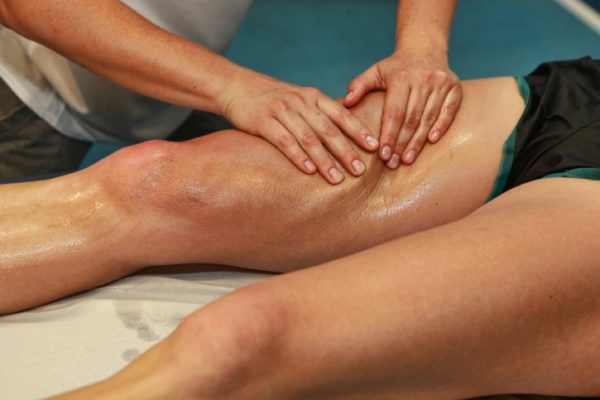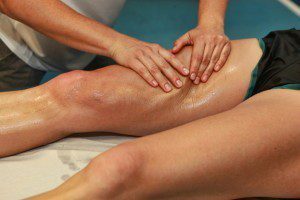Can Massage Therapy Improve Your Athletic Performance?

Triathletes new and old are likely familiar with the way training takes a toll on our bodies. Practicing three sports with repetitive motions can lead to joint overuse. Long, hard training sessions can leave us feeling sore and exhausted — sometimes for days.
Massage therapy is an increasingly popular practice for athletes. Many triathletes have a massage therapist they see on a month-to-month or even weekly basis and swear by these visits to keep them able to train hard multiple times a week and prevent potential injury. Lauren Klippenstein, a Registered Massage Therapist in the Greater Toronto Area regularly treats endurance athletes and begins to see her clients’ improvement in just a few visits. “Massage therapy has proven benefits in improving joint mobility, improving lymphatic drainage, reducing muscular tension and decreasing pain,” says Klippenstein. For triathletes, this means it can help the recovery process after a long workout by bringing increased blood flow to specific muscle groups and help flush out metabolic waste. It also means bringing awareness to the process of the body when it trains and checking to make sure that everything is functioning at its best. It’s also a great relaxation technique — many triathletes use an hour-long massage to just decompress.
Triathletes may see a massage therapist for general or specific needs. “Many of the endurance athletes I treat come in with similar concerns. Some common ones are pulled muscles in the legs or groin and plantar fasciitis,” she says. These are nothing new for triathletes, especially runners. “For any strain, I first need to know when the injury occurred. From there, once the initial inflammation has gone down I use muscle stripping to eliminate any tension and trigger points. For plantar fasciitis, I use a more passive stretching technique along with some joint play within the foot.”
The most important thing to know about massage therapy for triathletes is that everyone responds to it differently. Similarly, building a trusting relationship with your massage therapist could mean you need to try out a few before you pick someone to see regularly. Not everyone’s body will react well to a deep pressure massage just the way your training partner’s massage therapist might not be the best fit for you. It’s important to maintain open communication before and during the massage to really benefit. “Massage therapists give their best treatments when a client vocalizes whether the pressure works for them and whether they want more or less attention paid to certain muscle groups.”
Elite triathletes may see their massage therapist multiple times in a week, but for the regular recreational triathlete, once or twice a month is sufficient. “Go into your appointment knowing what you hope to achieve by the end,” advises Klippenstein. Though sessions are commonly offered in 60-minute time blocks, Klippenstein recommends booking 90 to 120 minutes if possible. “Sometimes a client would really benefit from some added time because they have multiple major muscle groups that require work. An hour isn’t always long enough for me to really help treat the issue or help the healing process along.” Finally, as with training it’s not realistic to expect results right away. “Some endurance athletes I treat only begin to feel the process working after a few visits. But once they do, they usually make massage a permanent aspect of their training regime going forward.”
Lauren Klippenstein is a Registered Massage Therapist and graduate of Trillium College. She specializes in Swedish massage which she believes is optimal for athletes. She works out of Endorphins Health & Wellness Centre in Burlington, Ontario.


